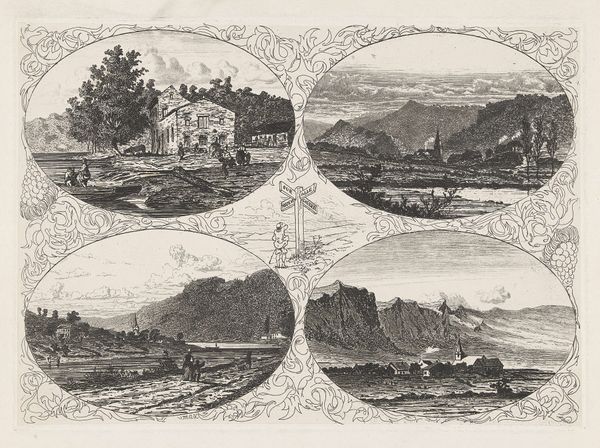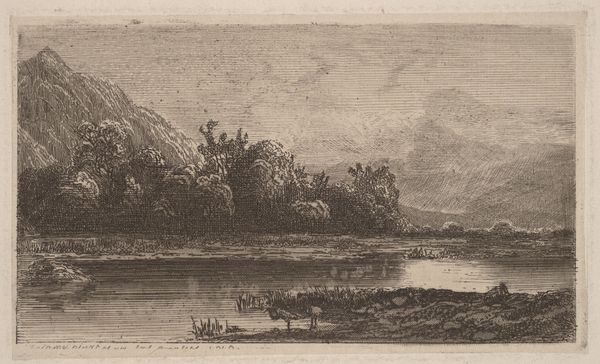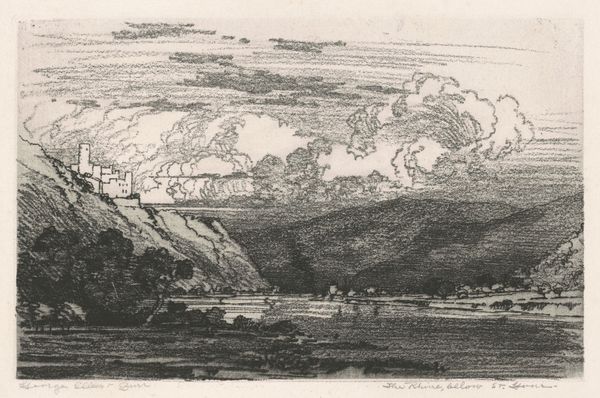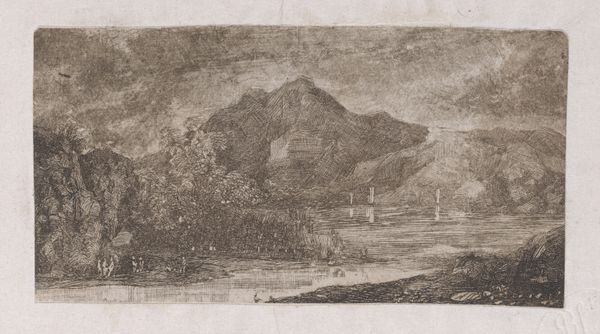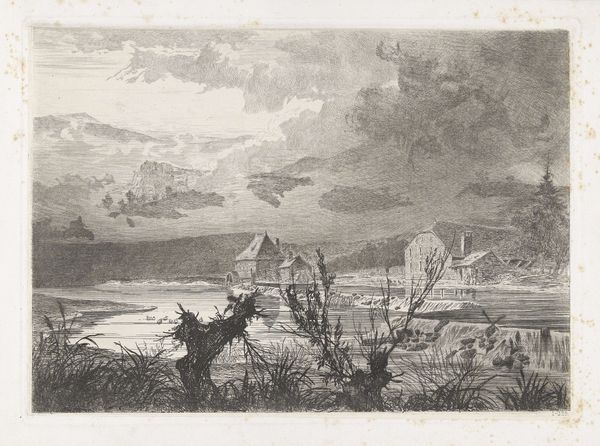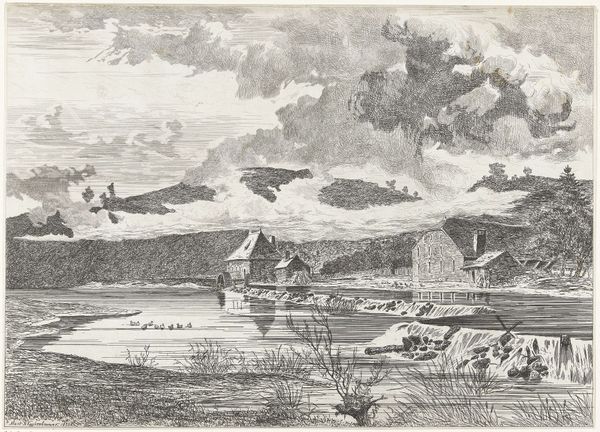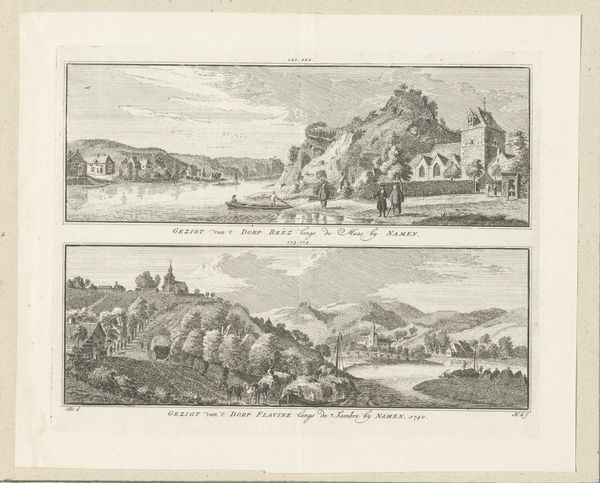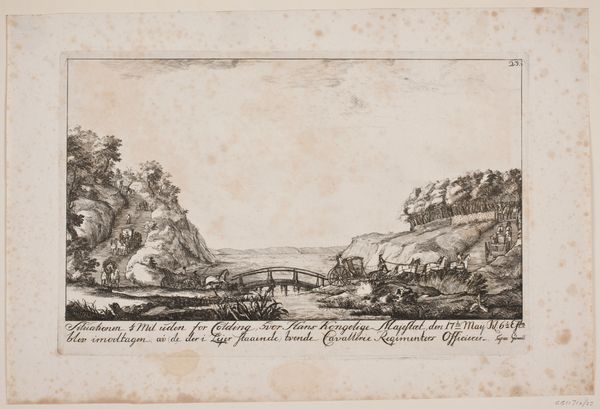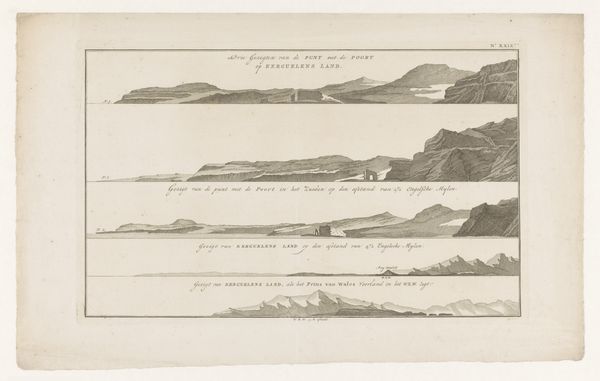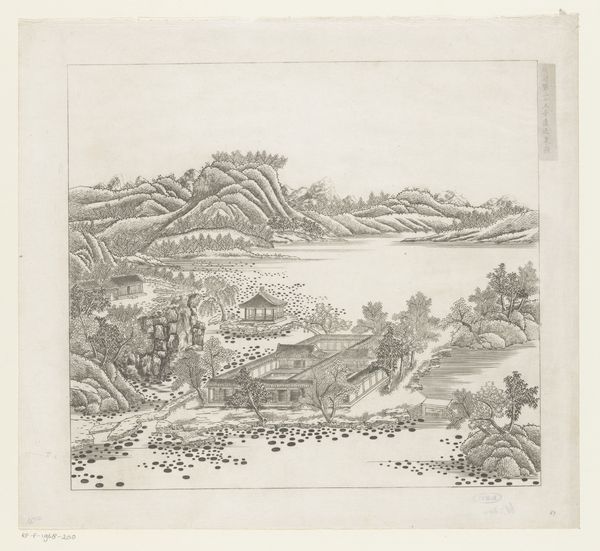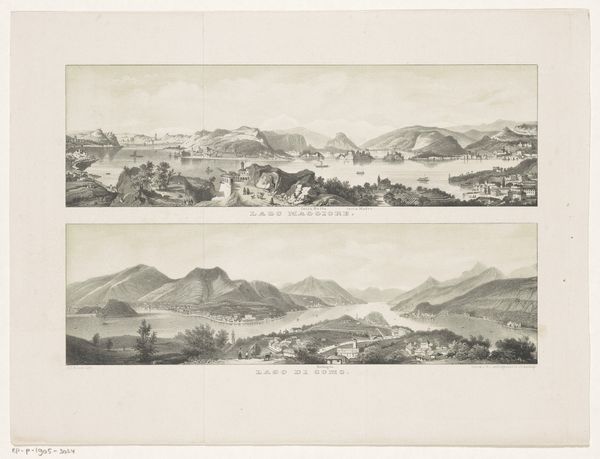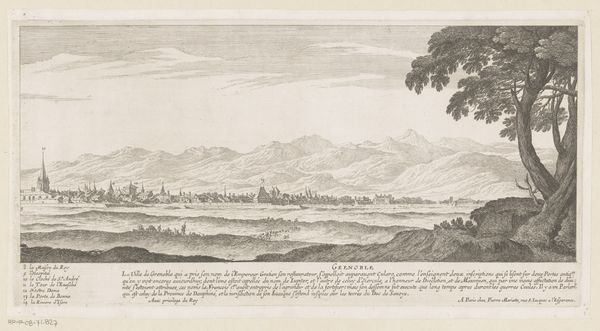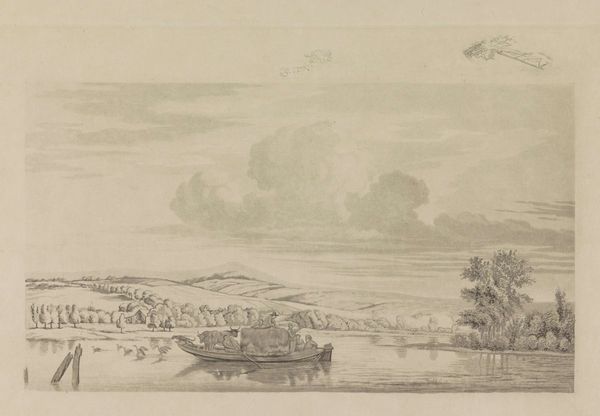
Gezicht op Ouren, Alle, Mouzaive en Chairière 1831 - 1897
0:00
0:00
drawing, print, etching, pencil
#
drawing
# print
#
etching
#
pencil sketch
#
landscape
#
river
#
sketchwork
#
mountain
#
pencil
Dimensions: height 230 mm, width 321 mm
Copyright: Rijks Museum: Open Domain
Editor: This is "Gezicht op Ouren, Alle, Mouzaive en Chairière" by Martinus Antonius Kuytenbrouwer Jr., dating somewhere between 1831 and 1897. It’s currently housed here at the Rijksmuseum and appears to be a composite print of landscapes rendered with pencil and etching. It strikes me as a very academic approach to landscape art, almost like a study in different terrains. What are your initial thoughts when you see it? Curator: My thoughts go immediately to the tradition of the Grand Tour, the practice of affluent Europeans traveling the continent to absorb culture. This print feels like a curated collection of picturesque views meant to be consumed in one go. It begs the question, what audience was Kuytenbrouwer targeting with this piece? Was it a souvenir for tourists, or something meant for armchair travelers back home? Editor: That’s interesting – a kind of travelogue in print form! I hadn't considered the Grand Tour angle. The different landscapes, presented almost like specimens, do give it that collected feel. What does that say about how landscapes were viewed at the time? Curator: Landscapes were often seen as representations of national identity and historical narratives. These smaller scenes, grouped together, reinforce that landscapes could be possessed and compiled, reflecting perhaps the collector’s world view and aspirations of that era. Note, too, the almost scientific quality of the linework. This lends the entire work a scholarly feeling. Do you get a sense of how idealized or realistic these landscapes feel? Editor: They definitely feel somewhat romanticized, cleaner and more orderly than maybe reality was. It seems less about pure documentation and more about constructing an ideal. Curator: Exactly. The romantic ideal was filtered through a lens of class and power, where the "untamed" is tamed and curated. I think investigating the context of Dutch printmaking at the time could further illuminate his role and intent as an artist making landscape views. Editor: That makes me see the print completely differently now. Thanks! Curator: My pleasure. It shows the real public work that art performs, which shifts constantly as history grinds on.
Comments
No comments
Be the first to comment and join the conversation on the ultimate creative platform.
